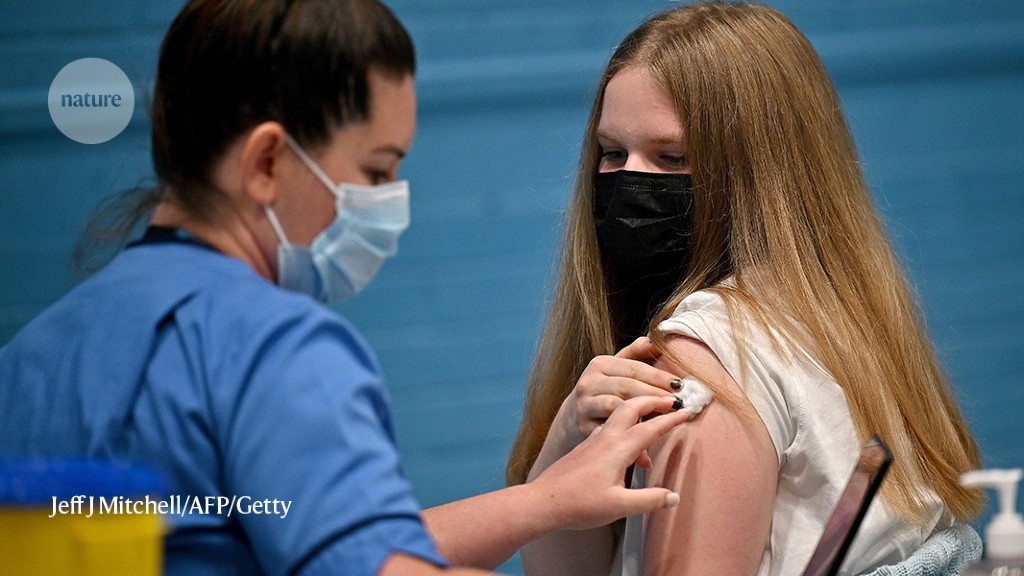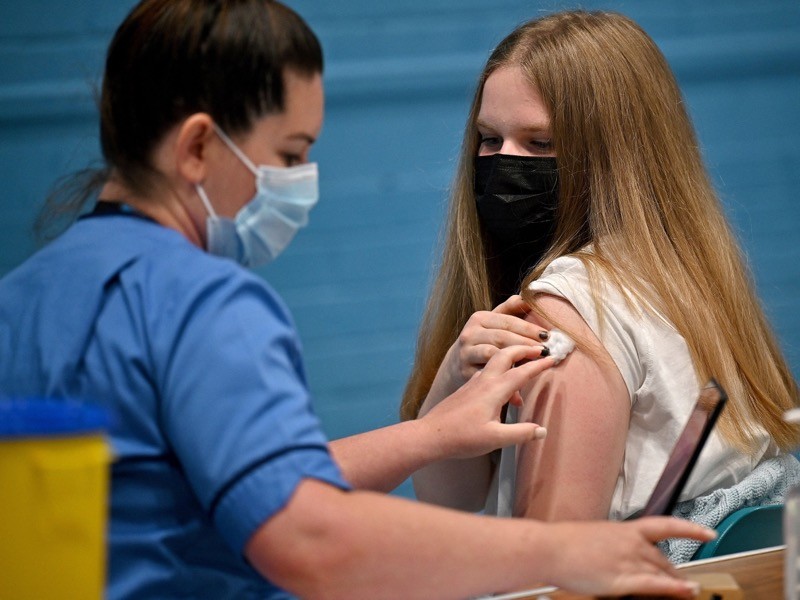When early field data showed that vaccinating people cuts transmission of the SARS-CoV-2 virus, researchers were cautiously optimistic. But they warned that many of those studies, although promising, took place before the fast-spreading Delta variant proliferated worldwide. Now, reports from various countries seem to confirm what scientists feared after the variant tore through India with alarming speed in April and May: Delta is more likely than other variants to spread through vaccinated people.
Data from COVID-19 tests in the United States, the United Kingdom and Singapore are showing that vaccinated people who become infected with Delta SARS-CoV-2 can carry as much virus in their nose as do unvaccinated people. This means that despite the protection offered by vaccines, a proportion of vaccinated people can pass on Delta, possibly aiding its rise.
“People who have a Delta virus and happen to have ‘breakthrough’ infections can carry these really high levels of virus, and can unwittingly spread the virus to others,” says David O’Connor, a virologist at the University of Wisconsin–Madison.
The findings underscore the importance of protective measures such as wearing masks indoors to reduce transmission. Researchers stress that COVID-19 vaccines are protective against serious illness and death, but the data on Delta transmission show that “people who are vaccinated still need to take precautions”, O’Connor says.
Testing transmissibility
O’Connor and colleagues at the Madison and Dane County health department looked at infections in Wisconsin in June and July.
The team used PCR tests, which are widely used to confirm COVID-19 infections, to estimate the concentration of virus in nasal-fluid samples. The tests detect the virus’s genetic material by amplifying DNA until it is detectable as a fluorescent signal. The number of amplification cycles needed to get a signal — a measure called the cycle threshold value or Ct — serves as a proxy for viral concentration in the sample. The lower a sample’s Ct, the more viral genetic material present.
In a preprint study published on medRxiv on Aug 111, the researchers compared Ct values for 719 people between 29 June and 31 July, during which 90% of the 122 coronavirus samples they sequenced were the Delta variant. Of the 311 vaccinated people who tested positive for SAR-CoV-2 in that group, most had Ct values of less than 25, a level at which researchers expect the presence of infectious SARS-CoV-2. To confirm this, the team cultured 55 samples that had Ct values less than 25, from vaccinated and unvaccinated people, and detected infectious virus in nearly every one. Most unvaccinated people also had Ct values below this level.
“The bottom line is, this can happen — it can be true that vaccinated people can spread the virus. But we do not yet know what their relative role in overall community spread is,” says co-author Thomas Friedrich, a virologist at the University of Wisconsin–Madison.
Data from Provincetown, Massachusetts, suggest similar findings. An August report from the US Centers for Disease Control and Prevention (CDC) showed that following large gatherings in the beach town, nearly three-quarters of 469 new COVID-19 cases that occurred in the state were in vaccinated people2. Both vaccinated and unvaccinated people had comparably low Ct values, indicating high viral loads, and of the 133 samples sequenced, 90% were identified as Delta. The findings prompted the CDC to update its guidance on 27 July and once again recommend that people in areas of high transmission wear masks indoors.
The Provincetown results were linked to big gatherings, but Wisconsin didn’t have similar activity, suggesting that small household gatherings could also help Delta to spread, Friedrich says.
Different biology
In Houston, Texas, where a Houston Methodist Hospital team has been sequencing and logging SARS-CoV-2 variants for almost every COVID-19 case in the hospital system, about 17% of Delta cases are in vaccinated people since March 2021, nearly three times the rate of breakthrough infections compared with all other variants combined. Patients with Delta SARS-CoV-2 also stayed in hospital slightly longer than did people infected with other variants. “There’s potentially a slightly different biology to the infection,” says James Musser, a molecular pathologist and director of the hospital’s Center for Molecular and Translational Human Infectious Diseases Research. His team found that Ct levels were similar in vaccinated and unvaccinated people3.
However, vaccinated people with Delta might remain infectious for a shorter period, according to researchers in Singapore who tracked viral loads for each day of COVID-19 infection among people who had and hadn’t been vaccinated. Delta viral loads were similar for both groups for the first week of infection, but dropped quickly after day 7 in vaccinated people4. “Given the high virus levels seen in the first week of illness with Delta, measures such as masks and hand hygiene which can reduce transmission are important for everyone, regardless of vaccination status,” says co-author Barnaby Young, an infectious-disease clinician at the National Centre for Infectious Diseases in Singapore.
One massive analysis of Delta transmission comes from the UK REACT-1 programme, led by a team at Imperial College London, which tests more than 100,000 UK volunteers every few weeks. The team ran Ct analyses for samples received in May, June and July, when Delta was rapidly replacing other variants to become the dominant driver of COVID-19 in the country. The results suggested that among people testing positive, those who had been vaccinated had a lower viral load on average than did unvaccinated people. Paul Elliott, an epidemiologist at Imperial, says that these results differ from other Ct studies because this study sampled the population at random and included people who tested positive without showing symptoms.
These findings — along with an increase in cases in younger people who have not yet received both jabs — underscore the effectiveness of double vaccination against Delta, Elliott says. “We think it’s really, really important to get as many people double vaccinated, and particularly those younger groups, as soon as possible.”







More News
Retuning of hippocampal representations during sleep – Nature
Measurement of the superfluid fraction of a supersolid by Josephson effect – Nature
Fusion of deterministically generated photonic graph states – Nature